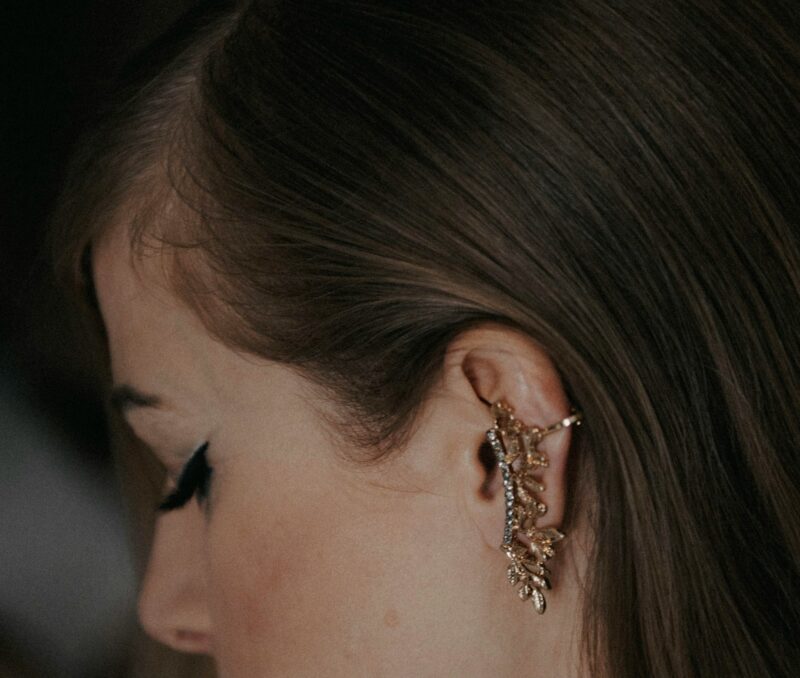Smart Jewelry Care for Sensitive Skin
Necklaces and bracelets rest directly against your skin, making them beautiful personal statements. But for those with sensitive skin, this close contact can sometimes lead to irritation, redness, or allergic reactions.
The problem often isn’t the jewelry itself, but the buildup of dirt, oils, and residues that accumulate over time. Proper jewelry care is essential not just for maintaining sparkle, but for ensuring your favorite pieces remain comfortable and safe to wear.
Understanding how to clean your accessories is key to preventing skin issues. Many people don’t realize that their cleaning methods might be contributing to the problem by using harsh chemicals that linger on the metal.
This guide will walk you through the best practices for skin safe cleaning and hypoallergenic upkeep. By following these steps, you can keep your necklaces and bracelets in pristine condition while protecting your skin.
1. Identify Your Jewelry’s Material
Before you begin cleaning, it’s crucial to know what your jewelry is made of. Different materials require different care methods to avoid damage.
- Hypoallergenic Metals: Metals like surgical-grade stainless steel, titanium, and niobium are known for being skin-friendly. Simply Whispers jewelry, for example, is crafted from these types of materials to minimize reactions.
- Precious Metals: Gold, sterling silver, and platinum are common but can cause issues if they are alloys containing nickel. Sterling silver can also tarnish, which may trap irritants.
- Plated Jewelry: Gold-plated or silver-plated pieces have a thin layer of precious metal over a base metal, which is often a nickel alloy. The plating can wear away, exposing the skin to potential allergens.
Check for markings on your jewelry (like “925” for sterling silver) or refer to the original purchase information to confirm the material.
2. Practice Regular, Gentle Wiping
One of the simplest yet most effective steps in your jewelry care routine is to wipe your pieces down after every wear.
- Use a Soft Cloth: A microfiber or jewelry-specific polishing cloth is ideal. Avoid using paper towels or tissues, as their fibers can be abrasive and may scratch delicate surfaces.
- Remove Daily Buildup: This quick wipe-down removes sweat, lotions, perfumes, and skin oils that can tarnish metal and trap bacteria, which are common culprits for skin irritation.
- Establish a Routine: Make it a habit to wipe your necklaces and bracelets before putting them back in your jewelry box. This preventative measure is a cornerstone of hypoallergenic upkeep.
3. Adopt Skin-Safe Cleaning Methods
When it’s time for a deeper clean, avoid harsh chemicals or commercial jewelry cleaners that can leave behind an irritating residue. Opt for gentle, skin-safe cleaning solutions instead.
- Mild Soap and Water: For most hypoallergenic and precious metals, a simple solution of lukewarm water and a few drops of mild, fragrance-free dish soap is all you need.
- The Cleaning Process: Soak the jewelry for a few minutes, then use a soft-bristled toothbrush to gently scrub away grime from crevices, like around clasps or stone settings.
- Thorough Rinsing: This is a critical step. Rinse the jewelry thoroughly under cool running water to remove all soap residue. Leftover soap can dry out and irritate your skin.
- Complete Drying: Pat the jewelry dry with a soft, lint-free cloth. Ensure it is completely dry before wearing or storing it to prevent moisture from causing tarnish or harboring bacteria.
4. Know Which Cleaners to Avoid
Many common cleaning agents are too aggressive for jewelry and can be harmful to your skin.
- Avoid Harsh Chemicals: Steer clear of bleach, ammonia, chlorine, and acetone. These can damage metals and gemstones and leave behind a chemical residue that causes severe skin reactions.
- Be Wary of “Natural” Cleaners: Ingredients like vinegar and lemon juice are acidic and can pit or damage certain metals and porous stones like pearls or opals.
- Skip Abrasive Toothpastes: While often recommended as a DIY cleaner, toothpaste contains abrasives that can scratch the surface of your jewelry, creating microscopic grooves where dirt and bacteria can hide.
5. Store Your Jewelry Properly
How you store your necklaces and bracelets is just as important as how you clean them. Proper storage protects your pieces from damage and minimizes contact with environmental irritants.
- Separate Your Pieces: Store each item individually to prevent scratching and tangling. Use a jewelry box with soft-lined compartments, small pouches, or anti-tarnish bags.
- Keep It Cool and Dry: Humidity is a primary cause of tarnishing, especially for sterling silver. Store your jewelry in a dry location away from direct sunlight and excess moisture (so the bathroom is not an ideal spot).
- Prevent Dust and Debris: Keeping your jewelry covered helps protect it from dust and other airborne particles that can contribute to skin irritation.
6. Remove Jewelry Before Certain Activities
To prolong the life of your jewelry and protect your skin, it’s wise to remove your pieces before engaging in certain activities.
- Before Showering or Swimming: Soaps, shampoos, and chlorine can tarnish metals and leave a film on your jewelry.
- Before Applying Lotions or Perfumes: Allow lotions, perfumes, and hairsprays to dry completely before putting on your necklaces and bracelets. The chemicals in these products can accelerate tarnishing and degradation.
- Before Exercising: Sweat can react with the metals in your jewelry, leading to discoloration and potential skin irritation. Removing your pieces also prevents them from getting caught or damaged.
Keep Your Jewelry Sparkling and Safe
Maintaining your necklaces and bracelets doesn’t have to be complicated. By incorporating these skin-safe cleaning and hypoallergenic upkeep practices into your routine, you can ensure your favorite pieces remain beautiful and comfortable for years to come.
A little bit of consistent jewelry care goes a long way in preventing skin reactions and preserving the sparkle you love.

